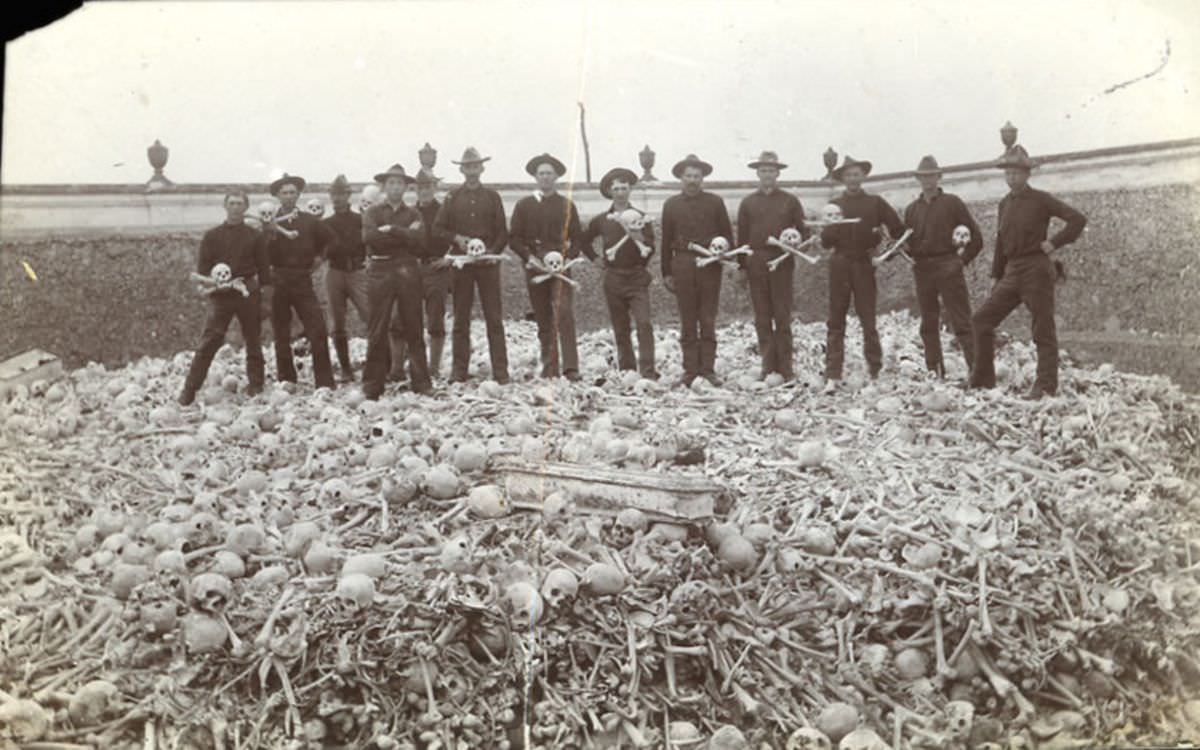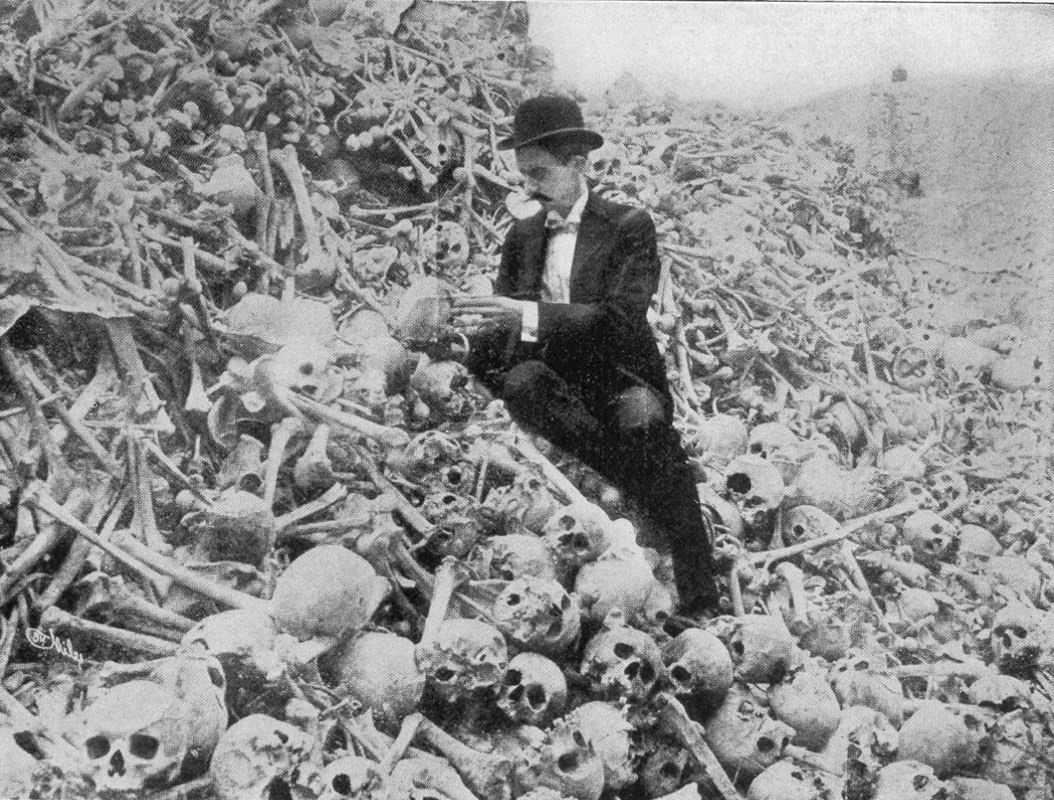The Colon Cemetery, located in Havana’s Vedado neighborhood, was founded in 1876 to replace the Espada Cemetery in Barrio de San Lázaro. Named after Christopher Columbus, this cemetery is known for its elaborate and intricately sculpted memorials.
But there’s more to this cemetery than just its beautiful monuments. In the early 1900s, the site was home to the notorious ‘boneyard,’ where unclaimed remains were discarded after five years. Graves at the Colon Cemetery could be rented for $10, and if the remains were not claimed by the end of the rental period, they were thrown into the boneyard by cemetery authorities.
During the 1890s, American soldiers stationed in Cuba took an unsettling interest in the boneyard. They would often remove skulls and bones from the pile and drive through the streets of Havana displaying them. The practice continued until their commander, General Brooke, ordered it to stop and instructed the pit to be covered over.
These chilling moments were captured in vintage photographs showing American soldiers standing atop the 30-foot-deep pile of bones, playing around and holding up skulls in the shape of the skull and crossbones. Interestingly, some of these photographs were taken and sold commercially as souvenir postcards for the soldiers to send back home to their loved ones—a stark contrast to the postcards we know today!









